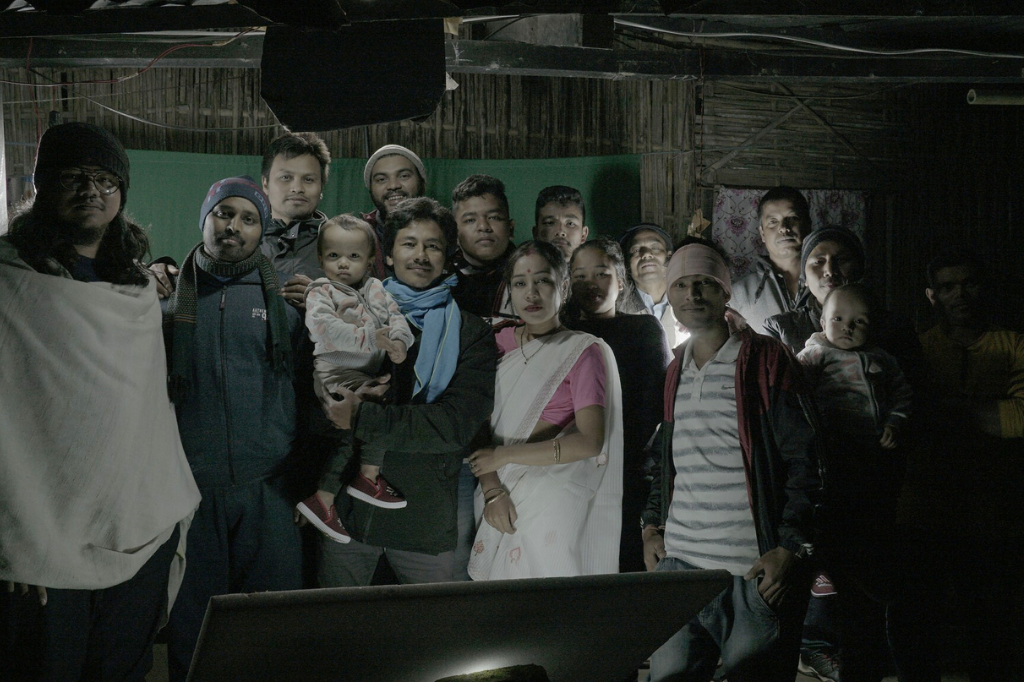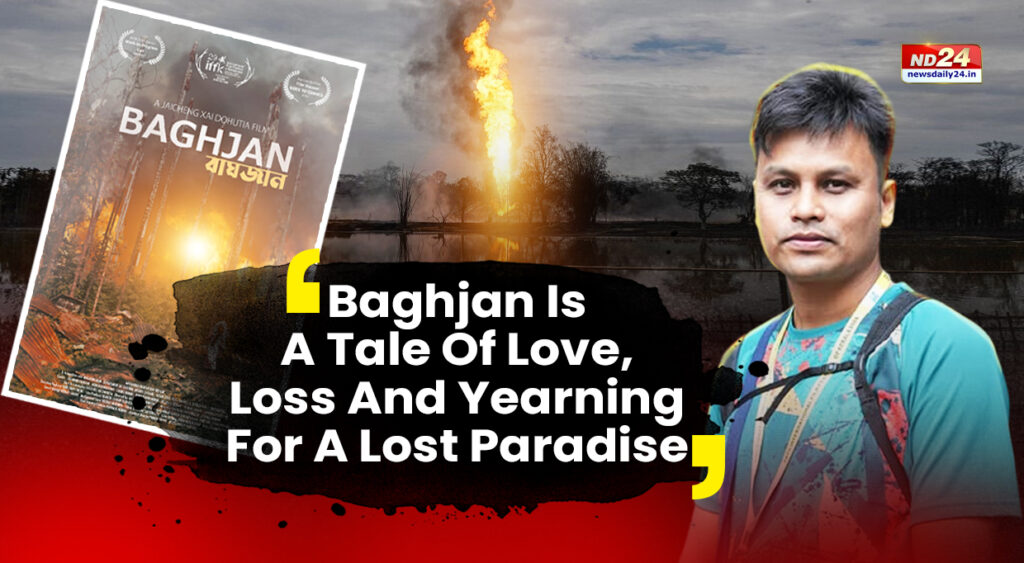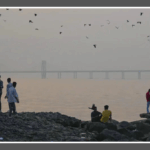In the heart of Assam’s Baghjan, a village surrounded by rich oil and gas fields, Manab and his wife Bhairabi lead a quiet life. Their world is shattered when a massive explosion during oil extraction ignites a fire that devastates their entire village.
The tragedy, especially the loss of his pregnant wife, sends Manab into denial. Determined to find her, he refuses to accept her death in the blast. His friends, Bimal and Janeki, deeply concerned about his mental state, try to help, but they soon find themselves caught in the turmoil of his erratic behaviour. This emotional and gripping narrative forms the backdrop of filmmaker Jaicheng Xai Dohutia’s Baghjan – a film that explores loss, resilience, and the impact of disasters on livelihood and the environment.
“The film portrays the tragic Baghjan well blowout, blending a fictionalized narrative with true events. Shot on location with real-life individuals affected by the disaster, including the protagonist Janeki and others who lost their homes and property, it vividly captures their harrowing experiences. During filming, the cast and crew stayed in actual relief camps, as the fires were still raging and the Covid-19 pandemic was at its peak,” says Dohutia, whose Haanduk won the Best Regional Film award at the 64th National Film Awards.
He adds, “This is likely the first Assamese film shot at the actual disaster site with people directly affected by it. The real locations and victims serve as the core characters, and my role was to bring them together through a simple narrative. By showing the aftermath of the disaster against this backdrop, the film highlights how industrialization can deeply affect local communities and their environment. Baghjan is a tale of love, loss, and yearning for a lost paradise.”
The trailer for the film was released on YouTube on January 11, 2025. Dohutia, an alumnus of Jyoti Chitraban Film & Television Institute (now Dr. Bhupen Hazarika Regional Government Film and Television Institute), plans to send the film to festivals for now.
“Maybe in 2026, we will explore the idea of releasing the film in cinemas or on OTT. Baghjan is more than a film; it is a voice for those left unheard amid industrial disasters. This story reminds us of the fragility of life and the urgent need to balance progress with responsibility,” the director-writer says. Dohutia’s 90-minute-long feature film featured in the Cannes Film Festival’s ’Goes To Cannes’ section in 2022.
The film is produced by Mayamora Production in association with the Assam Department of Cultural Affairs, Assam State Film (Finance & Development) Corporation, and Mogador Film.
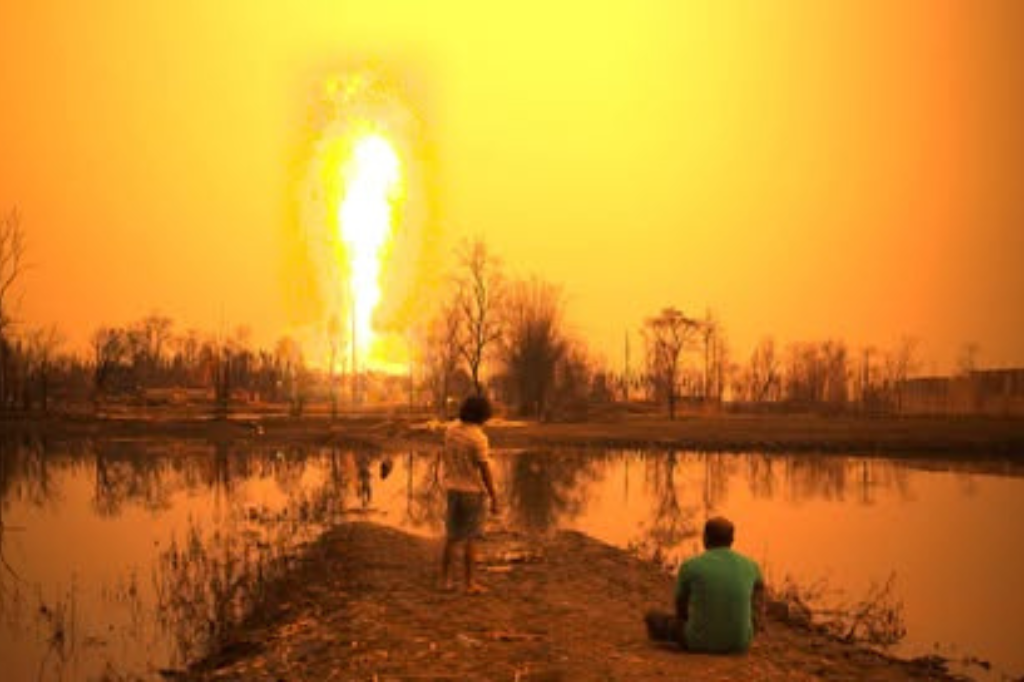
On May 27, 2020, a major blowout occurred at Well No. 5 in the Baghjan Oil Field, operated by Oil India Limited in Assam’s Tinsukia district. The incident caused a natural gas leak, which escalated into a fire on June 9. After more than five months of efforts, the well was sealed, and the blaze was extinguished on November 15, 2020. The blowout resulted in evacuations and extensive damage to the nearby Dibru-Saikhowa National Park and Maguri-Motapung Wetland.
In an exclusive interview with ND24, Dohutia shares more about the film. Excerpts:
Q. What inspired you to tell the story of the Baghjan oil well disaster, and how did you approach bringing this tragedy to the screen?
A: The Baghjan incident occurred in my home district of Tinsukia, just 45 km from my house, and the fire was visible from where I live. As the affected community belongs to my Moran community, the tragedy deeply impacted me. Initially, I considered making a documentary, but ultimately chose a hybrid approach – a fictional film shot in real locations with people who had lost their homes and land. This method allowed me to capture the raw reality while telling a compelling story grounded in true events.
Q. The film is bilingual, combining Assamese and Moran. How did you decide to use both languages, and what impact do you think it has on the authenticity of the story?
A: The Baghjan incident occurred in a region predominantly inhabited by the Moran tribe. To maintain authenticity, I had the local people, who were directly affected by the disaster, speak in their native Moran language. With the exception of Monuj Borkotoky, the rest of the cast spoke Moran, making the film naturally bilingual, blending Assamese and Moran.
Q. Manab’s journey is central to the film. What was your process for developing his character, and what did you hope to convey through his grief and resilience?
A: The character of Manab is played by Jadumoni Baruah, a local Baghjan resident and school principal. The film follows three main characters, with Manab at its core – a fisherman who lost his pregnant wife Bhairabi in the fire. Clinging to the belief that she is still alive, he feels responsible for her protection, revealing the deep emotional toll of the tragedy. Meanwhile, his friend Bimal struggles with guilt, and Janeki, another affected woman, fights to protect her family. Both characters draw from real-life experiences, reflecting the emotional and psychological struggles of the time.
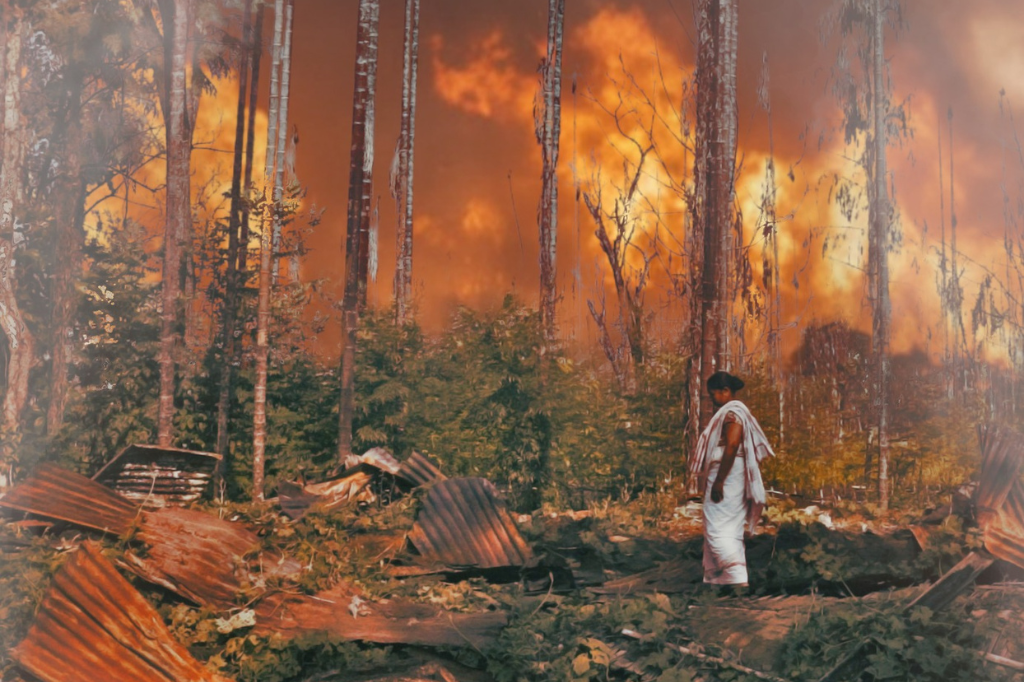
Q. The film features real-life survivors like Janeki. How did you cast and work with people directly impacted by the disaster? What kind of support did they receive throughout the production?
A: Bhairavi and Janeki, along with others, lost their homes in the blowout. The survivors saw the film as their voice. During research, I worked with my chief assistant director, Punyajit Moran, to identify potential cast members. We visited camps, listened to their stories, and shortlisted those who could portray the characters. Before filming, we did technical exercises and provided dialogues in advance, giving them time to internalize their lines. This approach ensured authentic performances while supporting them through recreating their traumatic experiences.
Q. Can you share any challenges you faced while filming on location, particularly with real-life survivors of the disaster and amid the Covid-19 pandemic?
A: Working with non-actors, especially those who had lost everything, was challenging, but they were committed to sharing their story and the trauma they endured. Since the film was based on real events, it resonated deeply with their experiences, and I’m grateful for their dedication. As for Covid-19, it didn’t have much impact on production. When you’ve already lost everything and face an uncertain future, a pandemic feels less threatening than the hardships you’re already facing.
Q. In your opinion, what can films like Baghjan contribute to the wider discourse on environmental disasters and their human consequences?
A: I believe Baghjan can serve as an important film by spotlighting how industrial disasters severely affect both the environment and human lives. By showing the immediate and long-term consequences, the film encourages us to reflect on what precautions and measures we should take to prevent similar tragedies in the future.
Q. Given the tragic nature of the Baghjan disaster, what message do you hope viewers will take away from the film?
A: The tragedy of the Baghjan disaster is that it was man-made and could have been prevented. Yet, people often fail to care about their survival, and this negligence may persist as long as humanity exists. The film’s core message is simple: we must be mindful of our existence and take responsibility for our actions.
